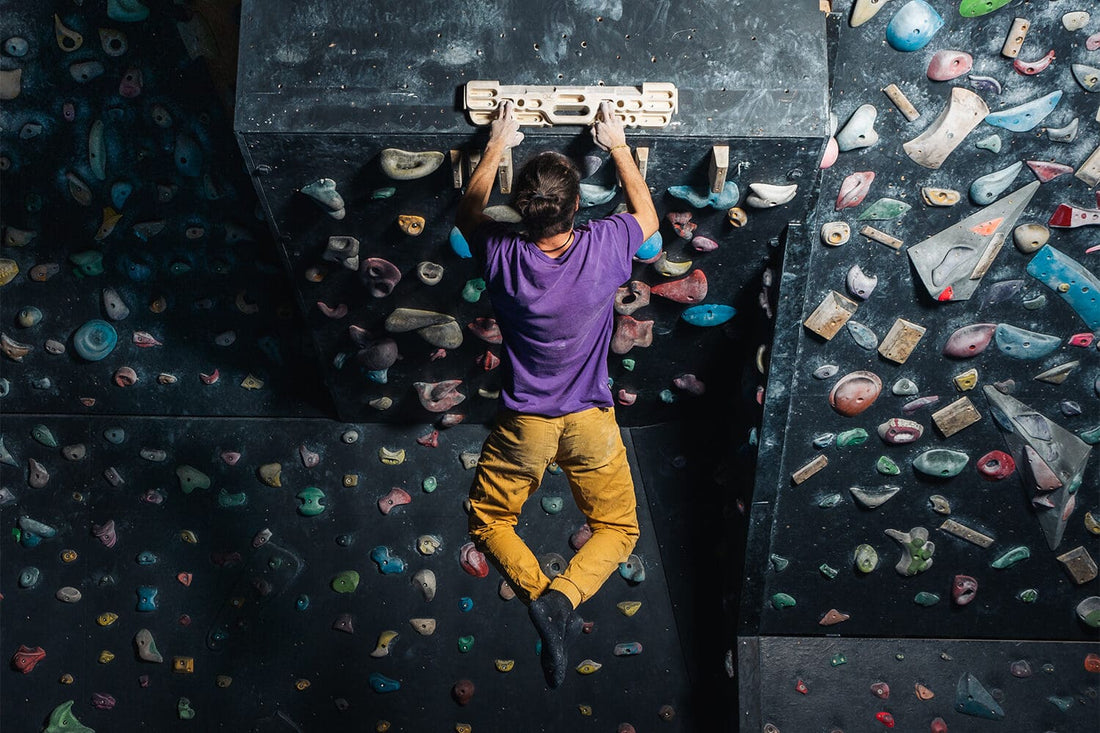
The Ultimate Hangboard Workout: Training Tips for Rock Climbers
Building finger strength and grip endurance is key to excelling at rock climbing, and hangboard training is one of the best ways to target these areas. While climbing improves overall fitness, focused hangboard workouts isolate finger tendons and muscles, allowing climbers to push past plateaus. This guide outlines the ultimate hangboard workout, offering tips to maximize training while minimizing the risk of injury.
Why Use a Hangboard?
A hangboard is an effective tool for building the finger strength necessary for holding difficult handholds, such as crimps, edges, and slopers. It allows for targeted, progressive overload of the fingers and forearms, areas essential for successful climbing. For experienced climbers, adding regular hangboard training can lead to improvements in grip strength, helping them tackle tougher routes and bouldering problems.
Getting Started: Key Considerations
Before diving into intense hangboard workouts, make sure you're ready. If you've been climbing for less than six months, focus on developing finger strength through climbing alone. Once you have a solid base (climbing V2 or 5.10 consistently), you can safely incorporate hangboarding.
Warm-Up Properly
To prevent injury, always warm up before using a hangboard. A proper warm-up should include:
Cardio: 5-10 minutes of light cardio (jogging, jumping jacks) to increase blood flow.
Finger Stretches: Light stretches and exercises, such as squeezing a stress ball, to activate your tendons.
Easy Climbing or Hangs: Perform a few easy boulder problems or dead hangs on large holds to prep your fingers.
Hangboard Training Principles
There are two key components to hangboard training: strength and endurance. Combining these in your workout will give you the best results for climbing both short, powerful routes and longer endurance climbs.
- Grip Types
Familiarize yourself with the most common hangboard grips:
Jug Grip: Full-hand holds, ideal for warming up.
Crimp Grip: Fingers bent at the first joint, used on small holds.
Open Hand Grip: Fingers slightly curled but not bent, good for slopers.
Half Crimp: A hybrid of the open hand and crimp grip, often used for smaller edges.
Pockets: Use two or three fingers to grip small holes, focusing on finger-specific strength.
- Hangboard Phases
Alternate between two phases for comprehensive finger training:
Strength Phase: Focuses on short, intense hangs to increase maximum grip strength.
Endurance Phase: Involves longer hangs or repeated hangs to build stamina in your grip.
The Ultimate Hangboard Workout
This workout combines both strength and endurance elements. Perform it 2-3 times per week with rest days in between.
- Warm-Up (10 Minutes)
Begin with 5 minutes of light cardio, followed by finger stretches and easy hangs on large holds (jugs). Perform a few easy bouldering problems if available.
- Strength Phase (15 Minutes)
For this phase, choose progressively smaller holds, using dead hangs to build strength.
Dead Hangs: Hang from the smallest edge you can manage with proper form for 10 seconds. Rest for 2-3 minutes. Repeat for 6-8 sets.
Start on jugs, then move to smaller holds (e.g., crimps or pockets) over time.
Max Effort Hangs: After your dead hangs, perform 2-3 sets of max-effort hangs. Use the smallest edge you can handle for 7-10 seconds, then rest for 3-4 minutes.
- Endurance Phase (15 Minutes)
For endurance, use repeaters and tension hangs to build grip stamina.
Repeaters: Hang for 7 seconds, rest for 3 seconds, and repeat 5 times (1 set). Complete 6-8 sets, resting for 1-2 minutes in between.
Use moderate-sized holds to prevent overstraining your fingers.
Tension Hangs: Focus on creating full-body tension while hanging from large holds for 15-20 seconds. Engage your core, legs, and shoulders to build full-body control. Perform 3-4 sets with 1-minute rest in between.
- Cool-Down (5-10 Minutes)
Finish with finger stretches and gentle massage of your forearms. Use a foam roller or massage ball to release tension in your forearms and shoulders.
Training Tips for Success
Consistency is Key: Aim to hangboard 2-3 times a week but avoid back-to-back sessions to allow your tendons to recover.
Listen to Your Body: If you experience sharp pain, particularly in your fingers, stop training immediately. Tendon injuries can take a long time to heal, so it’s better to be cautious.
Progress Gradually: Don’t jump straight to the smallest holds. Progress slowly over weeks and months, as tendons strengthen more slowly than muscles.
Common Mistakes to Avoid
Skipping the Warm-Up: This can lead to serious injuries, especially in the fingers and tendons.
Overtraining: Rest days are crucial. Tendons need time to recover after intense sessions.
Neglecting Core and Body Engagement: Even during hangboard workouts, maintaining proper body tension helps distribute the load more evenly, reducing strain on your fingers.
Conclusion
A well-rounded hangboard workout, done consistently and with proper technique, can greatly improve your climbing performance. By balancing strength and endurance training, you’ll build the grip strength necessary to excel on a variety of holds and routes. Remember to progress gradually, warm up thoroughly, and rest adequately to avoid injury. Hangboarding is a long-term investment in your climbing potential, but with the right approach, the rewards are well worth it.
